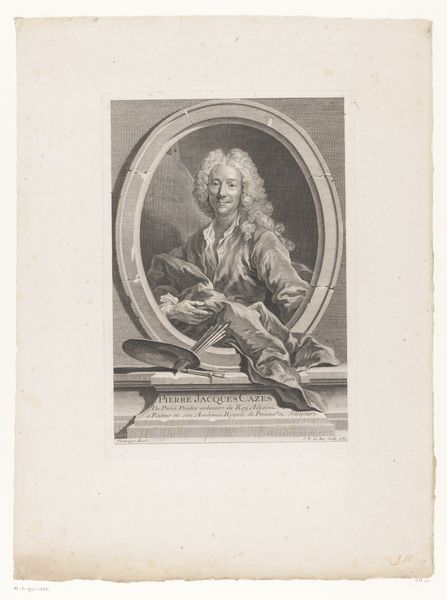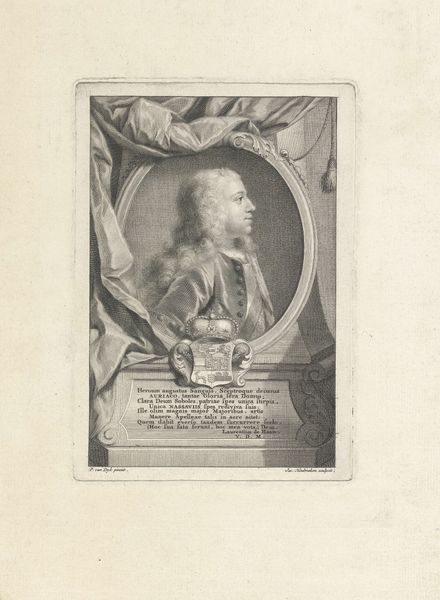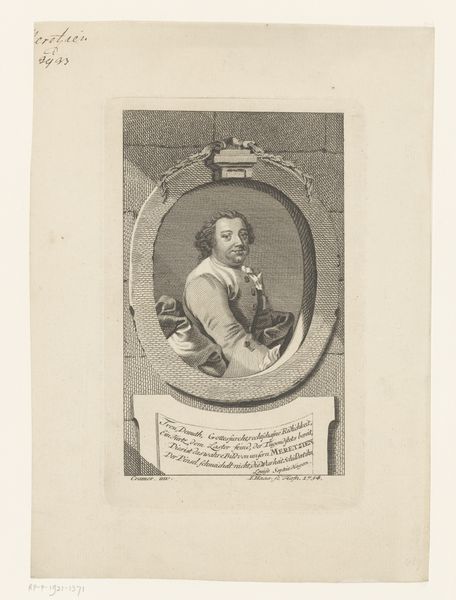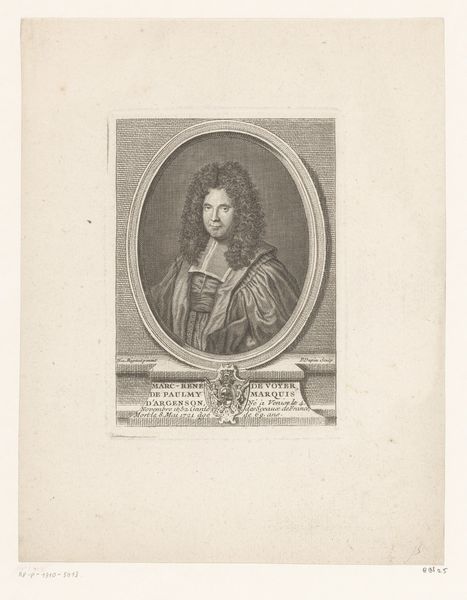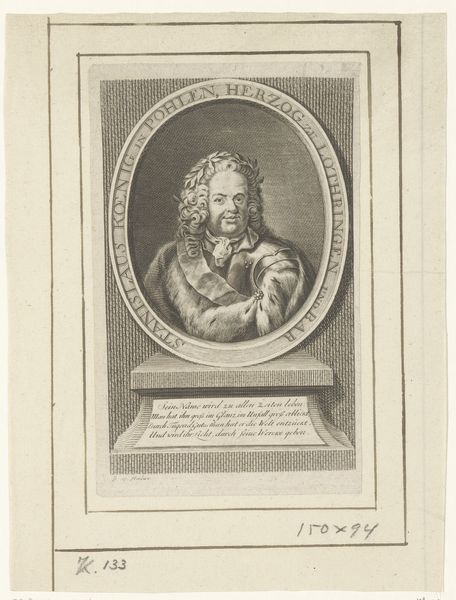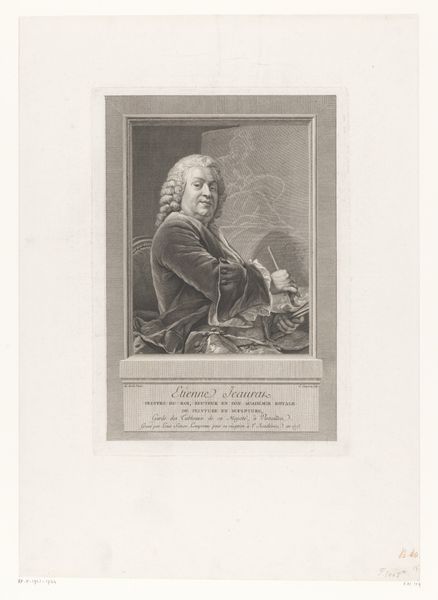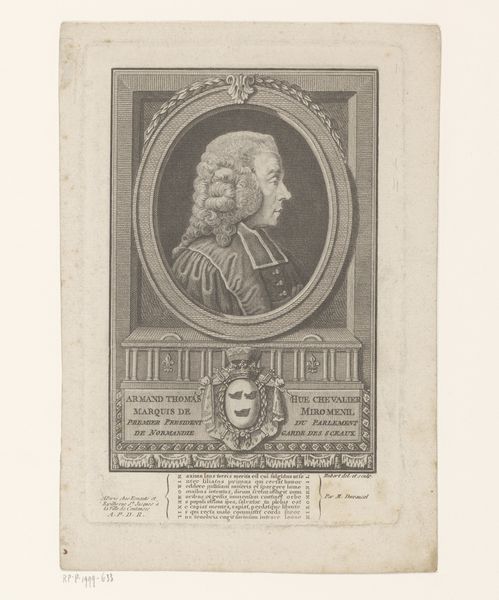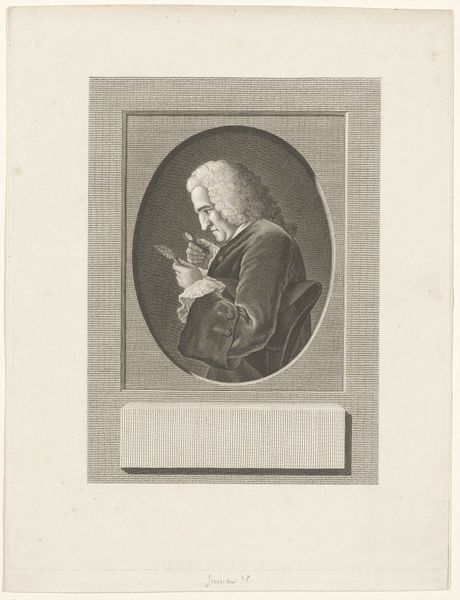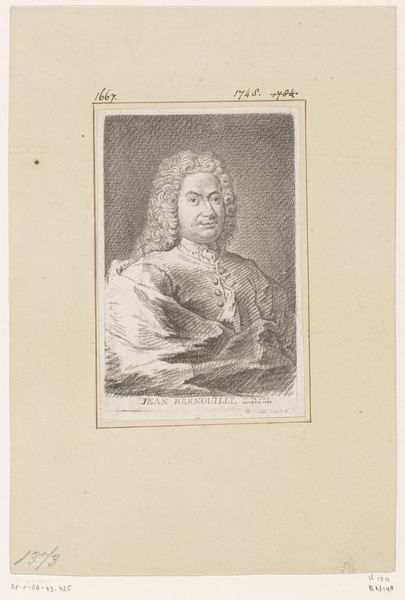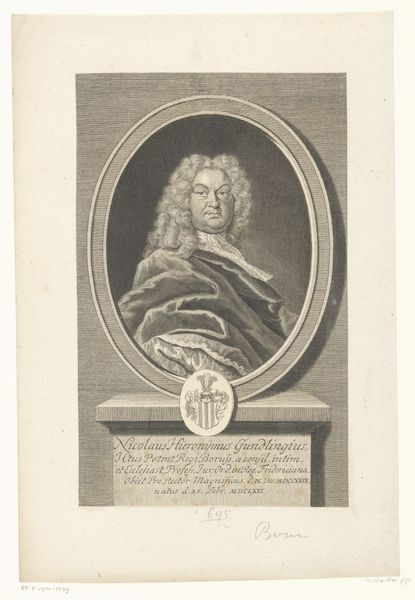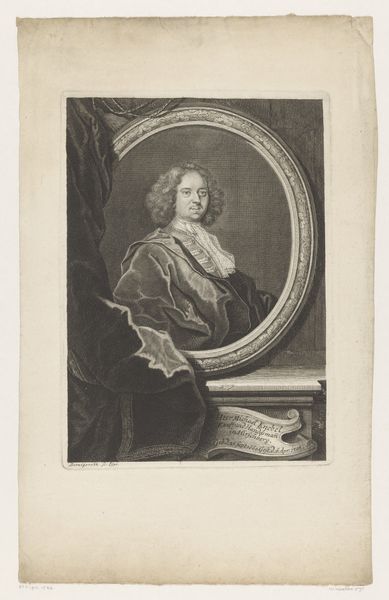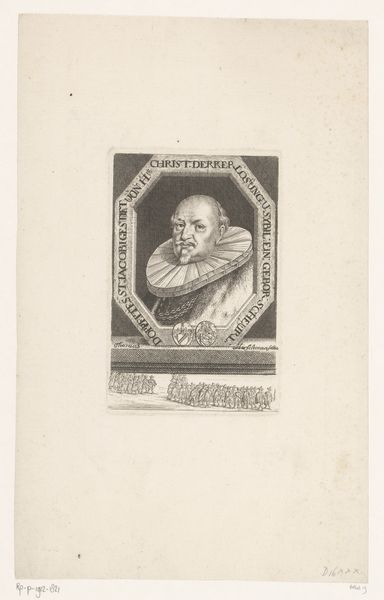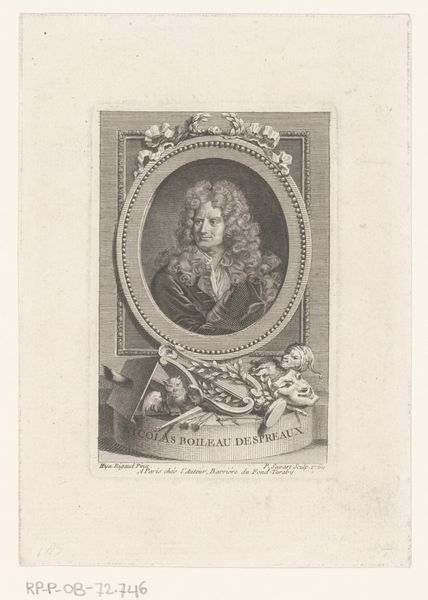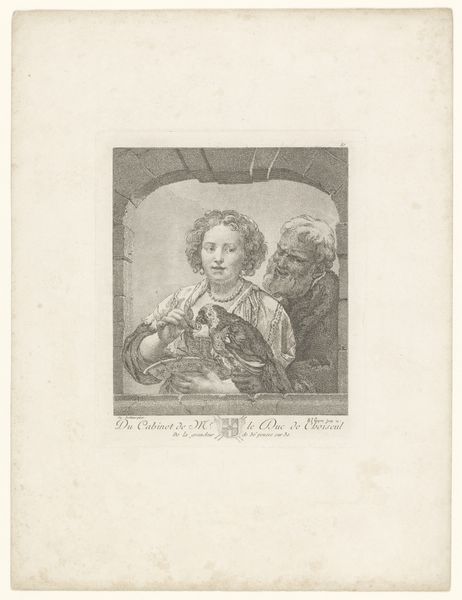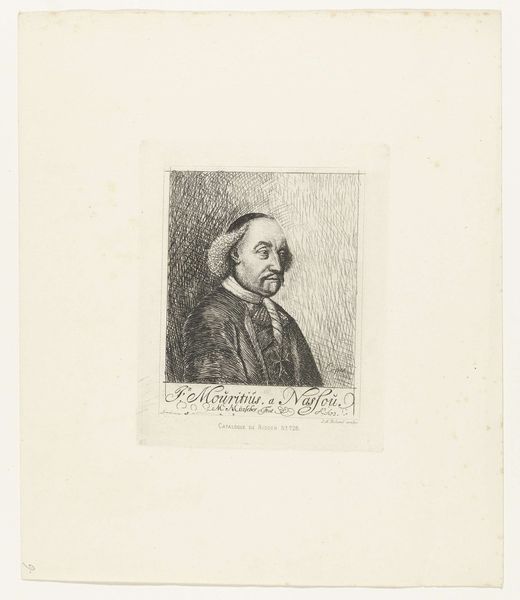
print, etching, engraving
#
portrait
#
baroque
# print
#
etching
#
old engraving style
#
engraving
Dimensions: height 177 mm, width 118 mm
Copyright: Rijks Museum: Open Domain
Editor: So, here we have a piece from the Rijksmuseum, "Portret van Dirk Maas," an etching, made sometime between 1669 and 1717. I’m really struck by the portrait within a portrait, almost a study on artistic representation. How do you interpret the context of its creation, especially considering how art academies and patronage operated then? Curator: That’s a great observation! This etching, done in the style of the Baroque period, reveals a lot about the social and artistic climate. Think about it – prints like this made art more accessible, didn’t they? It allowed portraits of the elite, or of prominent figures like Dirk Maas, to circulate more widely than a unique painting could. The portrait sits among artistic objects of the time -- we should consider how this arrangement and visual presentation reinforces the subject's status and role in society. Do you notice anything specific about the other depicted work? Editor: Yes, I see a landscape, quite detailed, which seems to highlight Maas’s versatility, perhaps suggesting the broad skill-set sought from artists at the time? It's like a mini-advertisement of sorts. Curator: Precisely! It's self-promotion but also demonstrates how the art market was developing. Etchings served a function; documenting artists, but also creating and catering to public tastes and desires for representation. The subject is carefully placed in a carefully chosen collection of signifiers. How do you think its distribution would be perceived by the Royal Academy? Editor: Interesting… It’s less dependent on the patronage of wealthy individuals or the direct sanction of the Academy. Perhaps they would see it as empowering for the artist and unsettling for the established structure? Curator: Absolutely! We’re seeing the democratization of art beginning. Printmaking was powerful. Editor: This reframes my understanding entirely; I was stuck on aesthetics, but seeing the context reveals its true revolutionary impact! Curator: That's why we study the history behind the art; it helps us unpack power structures and the politics embedded within seemingly simple images.
Comments
No comments
Be the first to comment and join the conversation on the ultimate creative platform.
